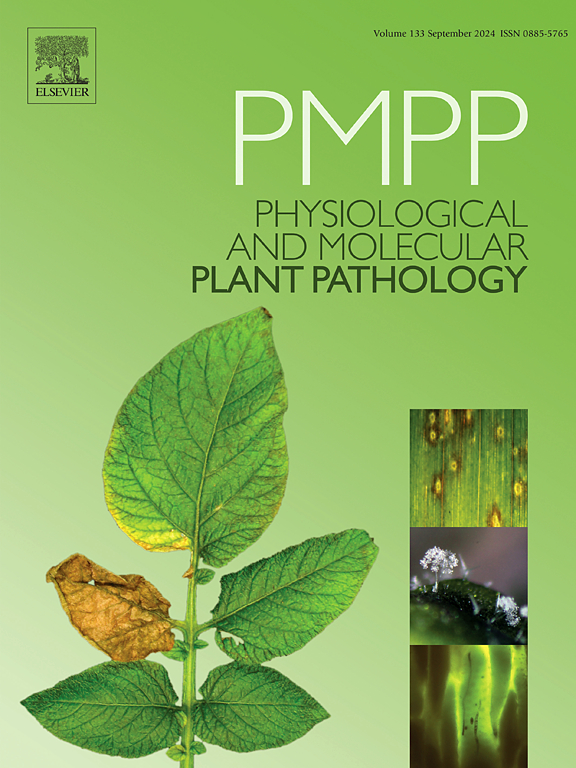Anthracnose of grapevines in Sri Lanka: Pathogen identification, epidemiological insights, and in vitro evaluation of bioactive extracts
IF 2.8
3区 农林科学
Q2 PLANT SCIENCES
引用次数: 0
Abstract
Anthracnose disease of grapevines, historically attributed to Elsinoë ampelina, has emerged as a significant concern in the Jaffna Peninsula, Sri Lanka. This study aimed to characterize the disease's etiology, epidemiology, and potential for biological control. Field assessments over two cultivation seasons (2022–2023) revealed a consistent pattern of disease progression, with peak incidence and severity occurring between 40 and 60 days post-pruning. Rainfall positively correlated with disease metrics, while wind speed showed a suppressive effect. Morphological and cultural characterization of 54 fungal isolates, coupled with multilocus phylogenetic analysis (ITS, actin, and histone H3), confirmed the presence of two distinct Colletotrichum morphotypes within the C. gloeosporioides species complex, potentially representing a novel lineage. Pathogenicity assays verified the virulence of representative isolates on grape leaves and fruits under both in vitro and in planta conditions. Furthermore, spore germination and lesion development were significantly inhibited by cell-free suspensions from Pseudomonas fluorescens, Bacillus megaterium, and ethanol extracts of Azadirachta indica, Lantana camara, Vitex negundo, Stoechospermum marginatum, and Padina boryana. These findings establish a members of new lineage of C. gloeosporioides complex as the primary causal agent of grape anthracnose in the region and highlight the promise of integrating biocontrol agents and botanical extracts into sustainable disease management programs.
斯里兰卡葡萄藤炭疽病:病原体鉴定,流行病学见解,以及生物活性提取物的体外评价
葡萄藤炭疽病,历史上被认为是Elsinoë真菌病,已成为斯里兰卡贾夫纳半岛的一个重大问题。本研究旨在描述该病的病因、流行病学和生物防治的潜力。在两个栽培季节(2022-2023)的现场评估显示,疾病进展模式一致,发病率和严重程度的高峰发生在修剪后40至60天。降雨量与病害指标呈正相关,风速对病害指标有抑制作用。对54株真菌的形态和培养特征,加上多位点系统发育分析(ITS、肌动蛋白和组蛋白H3),证实了在C. gloeosporioides物种复合体中存在两种不同的炭黑菌形态,可能代表了一种新的谱系。在离体和植株条件下对葡萄叶片和果实进行了致病性试验。此外,荧光假单胞菌、巨芽孢杆菌的无细胞悬浮液和印楝、山楂、牡荆花、毛茛和白莲花的乙醇提取物显著抑制了孢子的萌发和病变的发育。这些发现为该地区葡萄炭疽病的主要致病因子gloeosporioides复体的新谱系建立了成员,并强调了将生物防治剂和植物提取物整合到可持续疾病管理计划中的前景。
本文章由计算机程序翻译,如有差异,请以英文原文为准。
求助全文
约1分钟内获得全文
求助全文
来源期刊
CiteScore
4.30
自引率
7.40%
发文量
130
审稿时长
38 days
期刊介绍:
Physiological and Molecular Plant Pathology provides an International forum for original research papers, reviews, and commentaries on all aspects of the molecular biology, biochemistry, physiology, histology and cytology, genetics and evolution of plant-microbe interactions.
Papers on all kinds of infective pathogen, including viruses, prokaryotes, fungi, and nematodes, as well as mutualistic organisms such as Rhizobium and mycorrhyzal fungi, are acceptable as long as they have a bearing on the interaction between pathogen and plant.

 求助内容:
求助内容: 应助结果提醒方式:
应助结果提醒方式:


